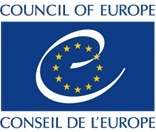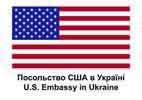Новини
Media Monitoring of Coverage of Political Actors during the Pre-election Campaign
30.08.2012
Main findings
Coverage of parties determined by political consideration and not newsworthiness
Data undermine stereotypes about the media: private and business- oriented media
appear to be overtly politicized
Channels do not provide analytical and critical coverage of authorities, thus failing to inform the electorate about consequences of bad governmence – the incumbent government less criticized than the previous one
State-owned UT1 not providing impartial and objective coverage
INTER TV provided 32 times more negative coverage about “Bat’kivshchyna” ("Fatherland", United Opposition) than about the Party of Regions
The only region where “Bat’kivshchyna” and “UDAR” get more coverage than the Party of Regions is Ivano-Frankivs’k
Channels in Donetsk dedicated to the Party of Regions over three and a half hours, and to “Bat’kivshchyna” only some 2 minutes
Internet has so far provided the best quality information about the campaign
TVi, Novyj Channel were leaders in the share of election news content among national television for the first three weeks of the campaign. The least attention was paid to elections by Inter, 1+1 and STB. Almost half of the material in weekly "Comments" was dedicated to electoral issues.
The Party of Regions was a leader of the information space in the press. “Svoboda” and CPU were mentioned situationally, UDAR and "Ukrajina - vpered!" - largely due to the "jeans" (hidden advertising disguised as news).
Regional media actively use manipulative techniques and media effects: labeling, the imposition of final understanding of the topic in the last words of the material or in the accompanying illustrations, the use of unverified facts with reference to sources like "rumors".
Compared to TV and press, Internet sites demonstrate the relative balance - especially with regard to representation of the Party of Regions and “Bat’kivshchyna”.




















